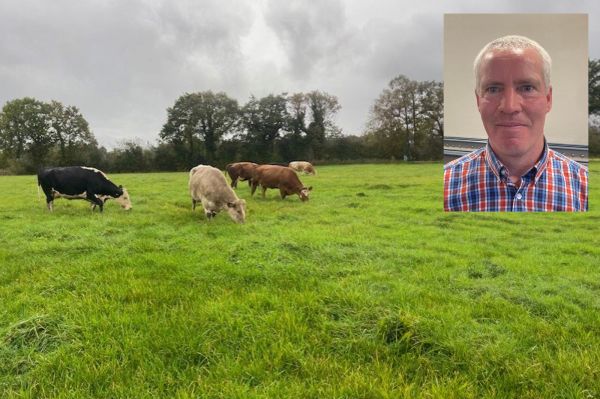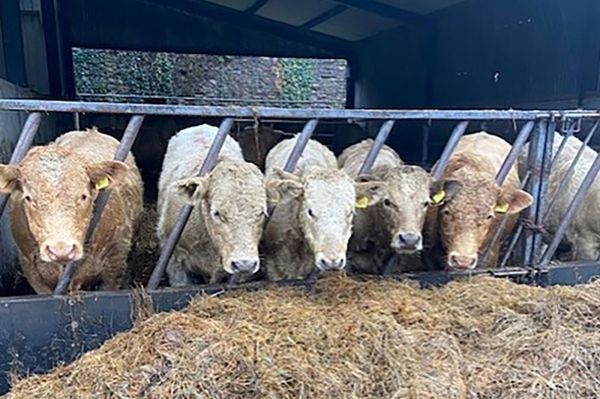Seismic change on Signpost farm

There has been some doubt over the ability or willingness of Irish farmers to change management practices to the extent required to meet climate-change mitigation targets set for the farm sector. If the first few years of the Teagasc Signpost Programme are any indication of what can be achieved over a relatively short time period, then we can conclude that, not only is widespread management change possible, but it is also widely achievable, with the correct advice, incentivisation and rational explanation to farmers that much of what is being expected of them is economically beneficial as well as environmentally and socially positive.
Sustainability in action
Ruairi Cummins is a cattle producer based near Kilmoganny in Kilkenny. He is a member of Teagasc’s Signpost Programme and has made significant progress over the past two years in implementing many of the best practices being advised to meet the targets set for himself and fellow Signpost participants. The Cummins farm runs to 36 hectares, with 45 suckler cows. Ruairi finishes the male progeny to beef at 16 months of age. Aside from the bull-beef enterprise, heifers and some bullocks are sold as store cattle.
Ruairi outlines the major changes that have taken place on the farm since his involvement in the Signpost Programme began: “Fertiliser use has changed completely. Our traditional fertiliser would have been NPK compounds, backed up with CAN. Now we spread protected urea, with 18:6:12 used to maintain fertility as well as providing additional nitrogen. The protected urea has been a real game changer for the farm. Its effectiveness is obvious. There are no atmospheric losses and there is a far lower weather impact than on conventional urea products. The science is there to back it up. I would have been very 'iffy' about protected urea initially, but over the past two years it has proven to be at least as good or better than straight urea or CAN. The initial price may be dearer but in the long run it works out cheaper because it delivers better results. For instance, we make all our silage in round bales and a lower application of protected urea still provides enough nitrogen for the same number of round silage bales per hectare.”
Soil fertility is a key priority
Ruairi places a lot of attention on soil fertility: “Building up the soil index is important to get good grass growth rates and get the best return from our fertiliser inputs, whether that’s bag manure or slurry. When I joined the programme that was one of the priorities, to soil test and act on the results. For me, it’s about building our pH figures and building our soil P and K indexes. Adequate liming is important to maximise the benefits of those other inputs. We spread 50 tonnes last year and a further 25 tonnes was spread this year, based on soil test results. The Department of Agriculture, Food and the Marine’s liming scheme support is another incentive to spread whatever lime is needed for optimum soil fertility.”
Ruairi has firsthand experience of the benefits of increasing clover content in the swards on his farm: “We have been increasing clover on the farm. It is a gradual process and we are already seeing the benefits, in terms of lower chemical fertiliser inputs without any reduction in the amount of forage produced. On the fields where clover has established well, we have reduced or eliminated nitrogen spreading. That’s a big one with huge saving on fertiliser purchase, especially now that prices are far higher than they were a few years ago.”

LESS is more
One of the biggest obvious changes in farm practice has been in the application of slurry on the Cummins farm, as Ruairi explains: “Better use of slurry has helped lift both soil index figures as well as productivity from the slurry. The splash-plate was the method of spreading previously. Now that has changed completely. The emphasis has changed. It’s more about timing, about weather and ground conditions and getting the best return possible from the slurry. Low emission slurry spreading, like the use of protected urea, is a game changer. We are making far better use of our cattle slurry with more selective spreading periods. Most of it gets spread in springtime when grass growth is taking off. Ammonia losses are reduced. The smell has reduced completely, and that’s important too. We all have to live with each other and share the countryside.”
Firm targets
Ruairi and his Signpost advisers have also targeted the livestock in terms of reducing their carbon footprint: “Any cow that is not performing well, such as calving annually, or not producing a good calf is culled. Finishing the bulls at 16 months is a massive challenge. Because of our emphasis on quality breeding, we are succeeding in getting some of them away at 14 months. We are able to calve the replacement heifers at two years. There’s a big saving in that from a lot of angles. Keeping a heifer to calve down at three years is a big cost in itself, without any benefits whatsoever.”
Sharing the costs
Improving water quality and biodiversity on the Cummins farm has been a focus for Ruairi: “We are a lot more conscious around the environment than we were before we entered the Signpost programme. We are signing up for the ACRES programme and that that will help us to finance changes that will deliver environmental improvements on the farm. Keeping adequate distances from streams for spreading fertiliser and slurry and moving fences out to keep livestock away from watercourses is important and we have done that. ACRES will allow us to make more changes on the farm and we welcome that opportunity. It will reduce the costs involved and that’s important, especially for farmers in fairly low margin drystock sectors. It’s essential that we all do our bit. The changes farmers are making are for the benefit of everyone, farming and non-farming, so we shouldn’t be left carrying all the cost.”
PROGRESS REPORT
Changes implemented
- 72% protected urea.
- 100% LESS.
- Clover inclusion in reseeds.
- Earlier finishing through better breeding and animal health.
Further progress planned
- Retain protected urea use levels.
- Increase clover content further to reduce N by 20%.
- Continue 100% LESS.
- Improve breeding for health and productivity increases.
Financial gains to date
- Nitrogen reduction: savings €880.
- 80% nitrogen spread as protected urea instead of CAN: savings €1,230.
- Total savings to date: €2,110.





